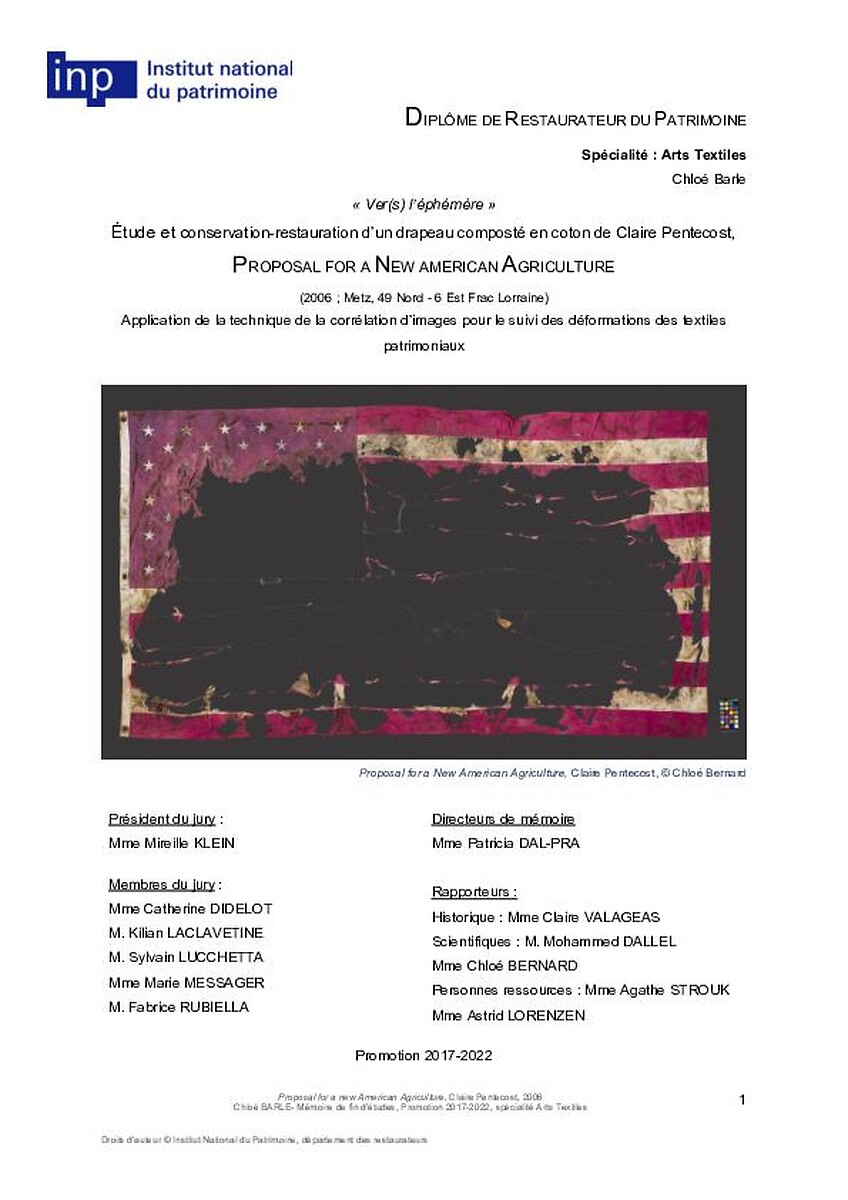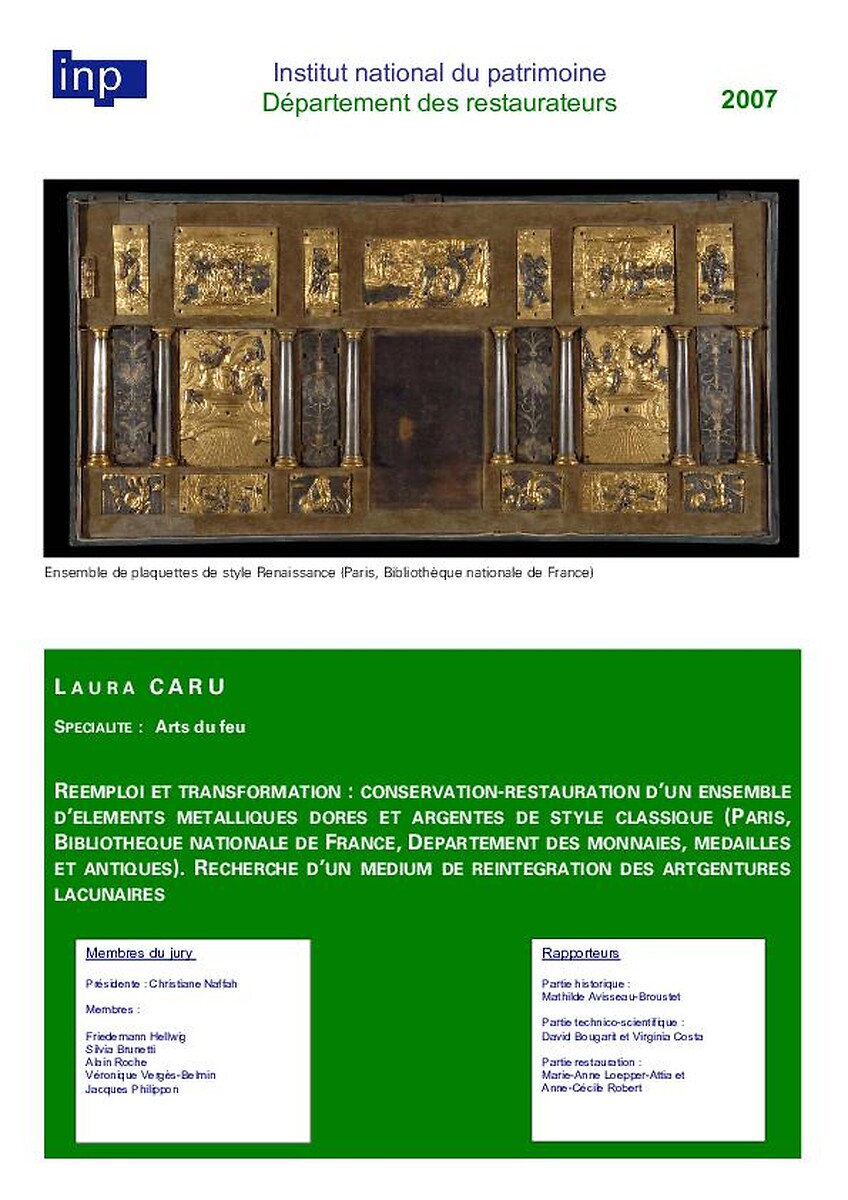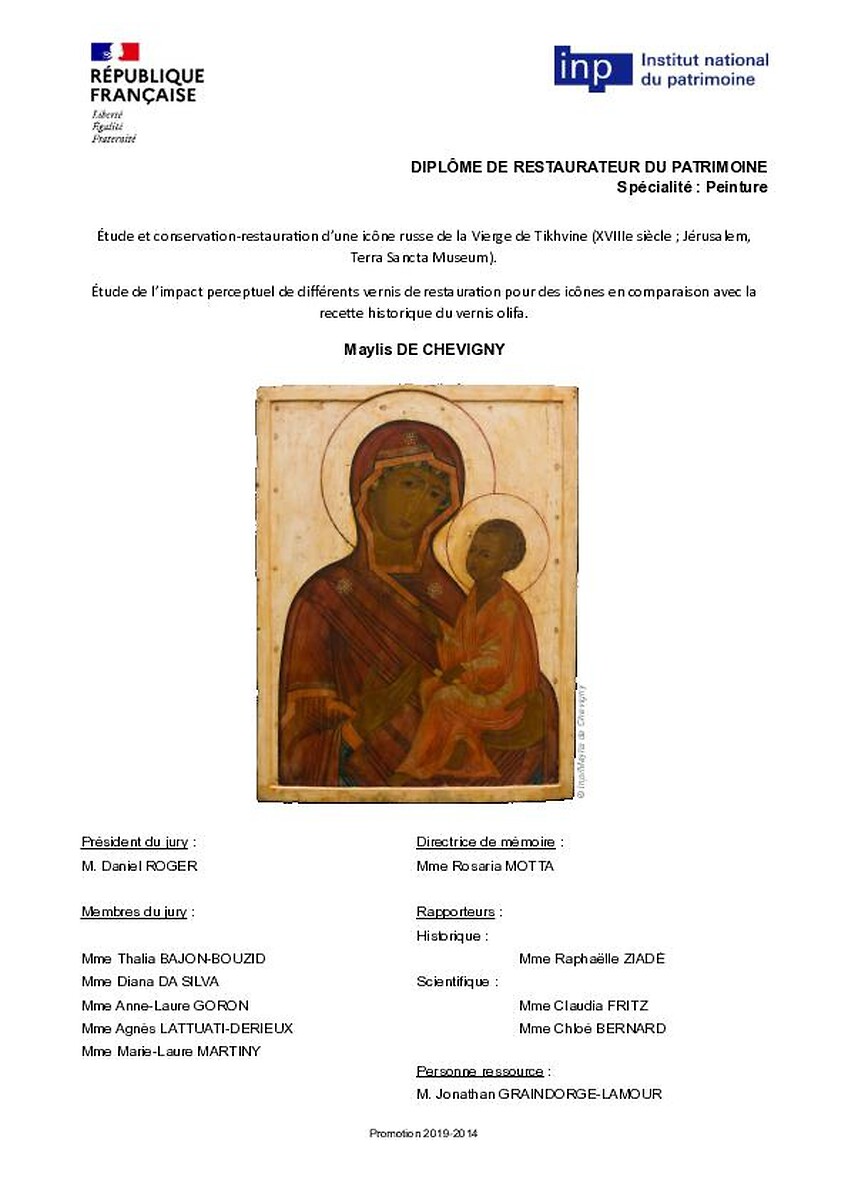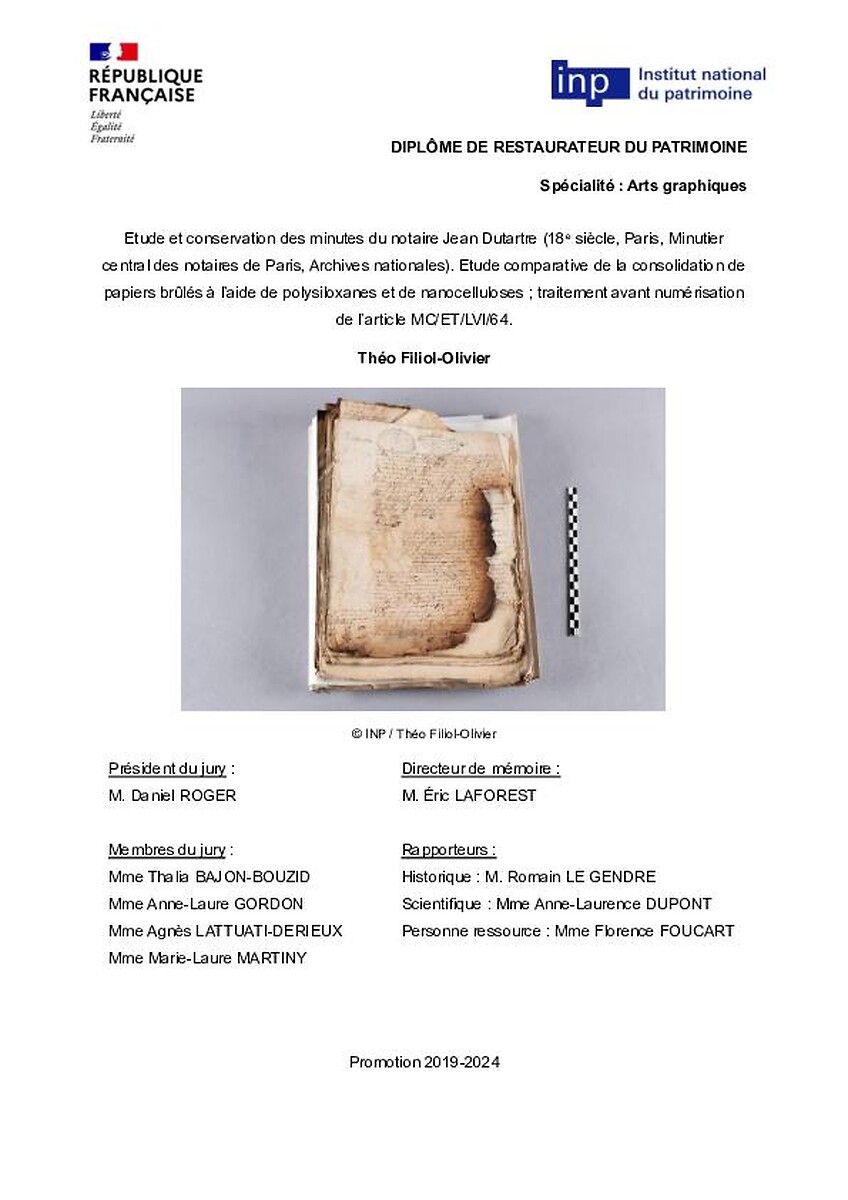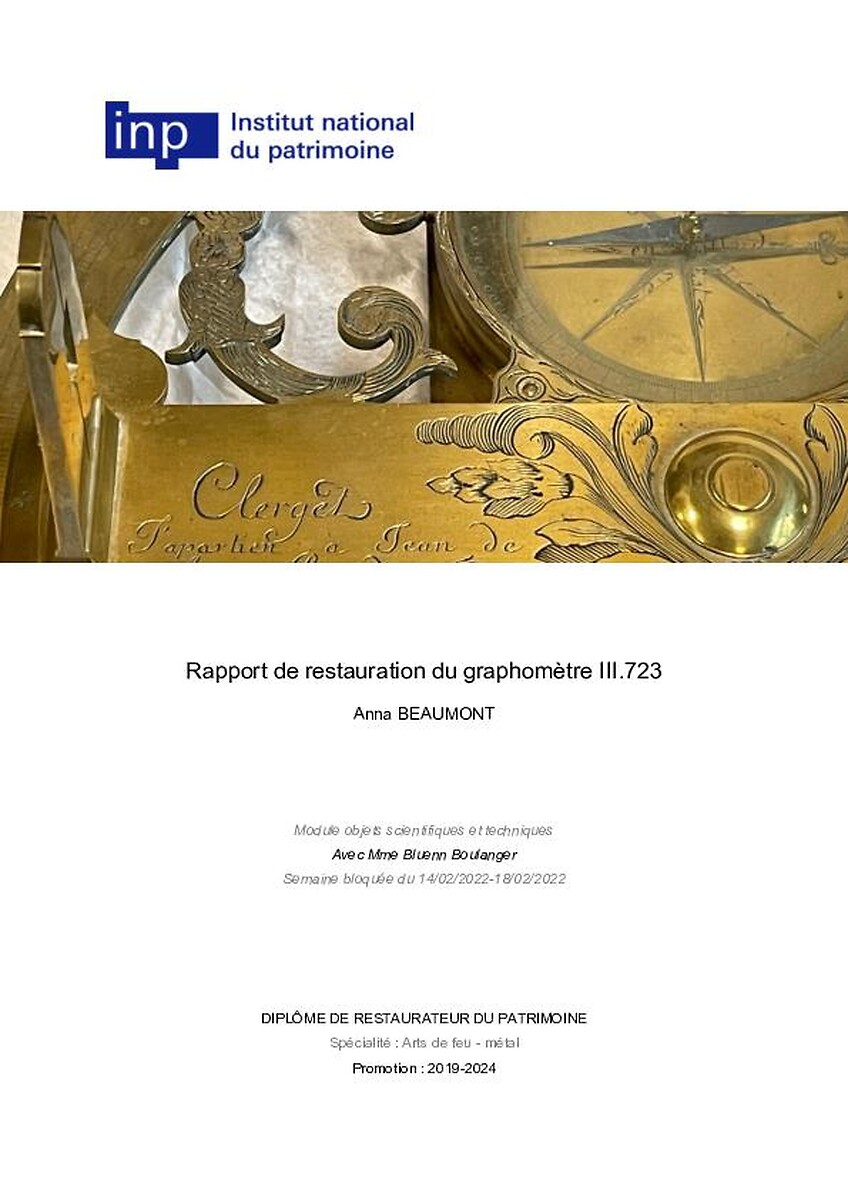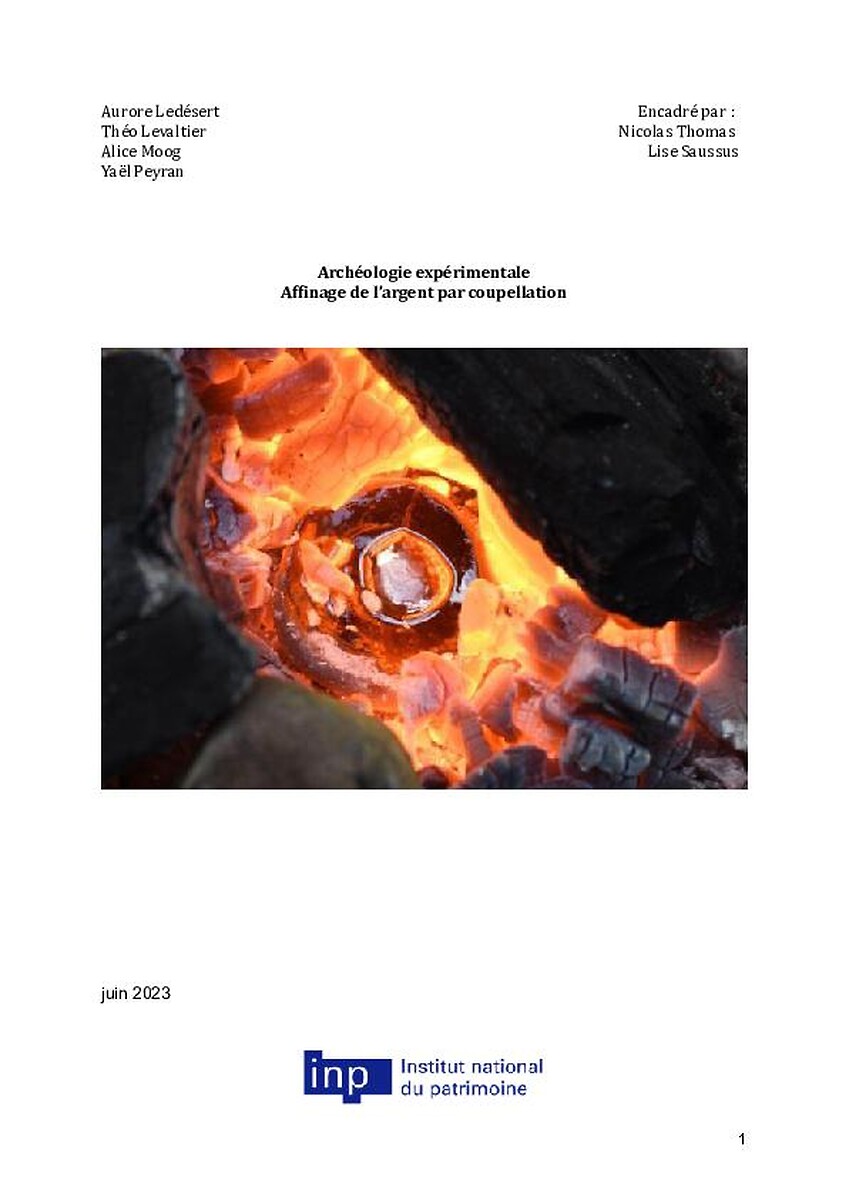La restauration des bijoux. Un collier byzantin (Musée du Louvre), une montre-tulipe Renaissance et quatre bijoux Art nouveau d'Henri-Ernest Dabault (Musée du petit palais) : mise au point d'un protocole d'évaluation de l'efficacité d'un inhibiteur de la…
N° : 4654
application/pdf
- 10,2 Mo
- 256 page(s)
Résumé en langue(s) étrangère(s)
Conserving jewellery : Byzantine necklace (Musée du Louvre), tulip-shaped Renaissance watch and four Art Nouveau pieces by Henri-Ernest Dabault (Musée du Petit-Palais). Drawing up a protocol to assess the efficiency of a corrosion inhibitor on silver objects kept in museums. Conservation of jewellery held by museums is still very often entrusted to non specialists (craftsmen or museum staff). They use methods which are not conservation techniques and this often leads to the loss of archaeological, historical and technical information/data. This is largely due to the fact that the deterioration of jewellery often causes a loss of the precious appearance which brings meaning to these artefacts and makes them understandable to the public. The first reaction to this loss of meaning is to restore the precious appearance and make the object visually satisfying again.
A Byzantine gold and garnet necklace, a German tulip-shape silver clock of the 17th century and four French Art Nouveau jewels were selected in order to demonstrate that bringing the appearance of preciousness back to the objects can be done using ethical conservation methods.
One way of preserving jewels (specially silver) is to reduce the frequency of cleaning by protecting them from indoor atmospheric corrosion. An investigation was carried out on pyridine as a corrosion inhibitor of silver. The parameters of corrosion of silver museum objects were also studied ; it appears that the tarnishing of silver in display cases is due to the natural ageing process of some of the materials used in the construction of these cases which emit pollutants. To make a realistic assessment, a "corrosive" display case was built in which the corrosion inhibitor was placed. X-ray diffraction analysis of the corrosion products which appeared and gas sampling showed that the reconstituted environment was similar to a museum display case atmosphere. Pyridine did not show any evidence of being a corrosion inhibitor in these conditions.
A Byzantine gold and garnet necklace, a German tulip-shape silver clock of the 17th century and four French Art Nouveau jewels were selected in order to demonstrate that bringing the appearance of preciousness back to the objects can be done using ethical conservation methods.
One way of preserving jewels (specially silver) is to reduce the frequency of cleaning by protecting them from indoor atmospheric corrosion. An investigation was carried out on pyridine as a corrosion inhibitor of silver. The parameters of corrosion of silver museum objects were also studied ; it appears that the tarnishing of silver in display cases is due to the natural ageing process of some of the materials used in the construction of these cases which emit pollutants. To make a realistic assessment, a "corrosive" display case was built in which the corrosion inhibitor was placed. X-ray diffraction analysis of the corrosion products which appeared and gas sampling showed that the reconstituted environment was similar to a museum display case atmosphere. Pyridine did not show any evidence of being a corrosion inhibitor in these conditions.
Auteur/artistes/intervenants
Type de document
Service producteur INP
Date de publication
Mots-clés
Citer la ressource
Tavoso, Olivier, "La restauration des bijoux. Un collier byzantin (Musée du Louvre), une montre-tulipe Renaissance et quatre bijoux Art nouveau d'Henri-Ernest Dabault (Musée du petit palais) : mise au point d'un protocole d'évaluation de l'efficacité d'un inhibiteur de la…", Médiathèque numérique de l'Inp, 15 octobre 2005 (consulté le 19 décembre 2025), https://mediatheque-numerique.inp.fr/documentation-oeuvres/memoires-diplome-restaurateurs-patrimoine/restauration-bijoux-collier-byzantin-musee-louvre-montre-tulipe-renaissance-quatre-bijoux-art-nouveau-dhenri-ernest-dabault-musee-petit
Type de licence
Tous droits réservés
Conditions d'utilisation
Cette ressource constitue une œuvre protégée par les lois en vigueur sur la propriété intellectuelle, dont les producteurs sont titulaires. Aucune exploitation commerciale, reproduction, représentation, utilisation, adaptation, modification, incorporation, traduction, commercialisation, partielle ou intégrale des éléments de cette ressource ne pourra en être faite sans l’accord préalable et écrit des ayants droit, à l’exception de l’utilisation pour un usage privé sous réserve des dispositions différentes voire plus restrictives du Code de la propriété intellectuelle.



